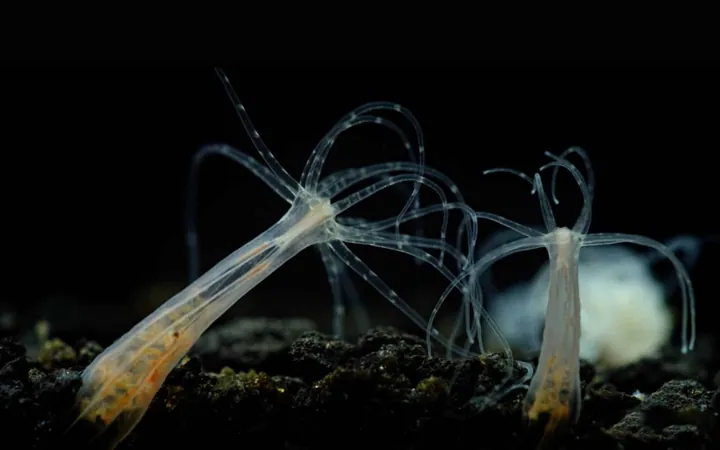
The 600 Million-Year-Old Sea Creature That Could Hold the Key to Human Immortality
2025-09-21
Author: Jacques
Meet the Starlet Sea Anemone: Nature's Miracle
Along the vibrant coastlines of the U.S. and Britain, a remarkable marine creature known as the starlet sea anemone (Nematostella vectensis) may have unlocked the secrets to beating aging. Forget about retirement funds; this unassuming little sea dweller might be our ticket to dramatically extending human life!
The Gift of Regeneration
At first glance, this tiny anemone might appear to be just another ocean inhabitant. However, its extraordinary ability to regenerate entire body parts positions it as the ultimate biological marvel. While humans can only dream of such regenerative powers, the starlet sea anemone regenerates with enviable ease. It's part of the Cnidaria family, which includes jellyfish, some of which possess the incredible ability to live forever.
The Science Behind Immortality
Recent research published in Science Advances could reveal the groundbreaking secrets hidden within these creatures. Scientists from the University of Vienna believe the anemone's apparent immortality stems from its ability to produce multipotent stem cells, enabling it to generate a continuous supply of fresh cells. This phenomenal regeneration could hold transformative insights for human biology.
Unlocking the Potential of Stem Cells
Stem cells in humans assist with healing injuries and regenerating certain organs, but the starlet sea anemone takes this to an entirely different level. Researchers have identified a unique population of cells capable of turning into specialized cells—like nerve and glandular cells—that can renew indefinitely. Imagine a future where human cells gain the same benefits!
A Glimpse into the Past
Even more exciting, scientists discovered that specific genes, nanos and piwi, regulate the anemone's stem cell differentiation and reproduction. These genes date back over 600 million years, offering a fascinating insight into biological processes that predate modern organisms. By mutating the nanos2 gene using CRISPR technology, scientists demonstrated the essential role this gene plays in the anemone’s incredible regenerative capabilities.
What This Means for Humanity
The implications of this research are astounding. As we inch closer to unraveling the science of longevity, could the secrets of the starlet sea anemone one day aid humanity in the quest for extended life? The age of immortality might be nearer than we think, with these tiny creatures lighting the path to a future free from the worries of aging.









 Brasil (PT)
Brasil (PT)
 Canada (EN)
Canada (EN)
 Chile (ES)
Chile (ES)
 Česko (CS)
Česko (CS)
 대한민국 (KO)
대한민국 (KO)
 España (ES)
España (ES)
 France (FR)
France (FR)
 Hong Kong (EN)
Hong Kong (EN)
 Italia (IT)
Italia (IT)
 日本 (JA)
日本 (JA)
 Magyarország (HU)
Magyarország (HU)
 Norge (NO)
Norge (NO)
 Polska (PL)
Polska (PL)
 Schweiz (DE)
Schweiz (DE)
 Singapore (EN)
Singapore (EN)
 Sverige (SV)
Sverige (SV)
 Suomi (FI)
Suomi (FI)
 Türkiye (TR)
Türkiye (TR)
 الإمارات العربية المتحدة (AR)
الإمارات العربية المتحدة (AR)